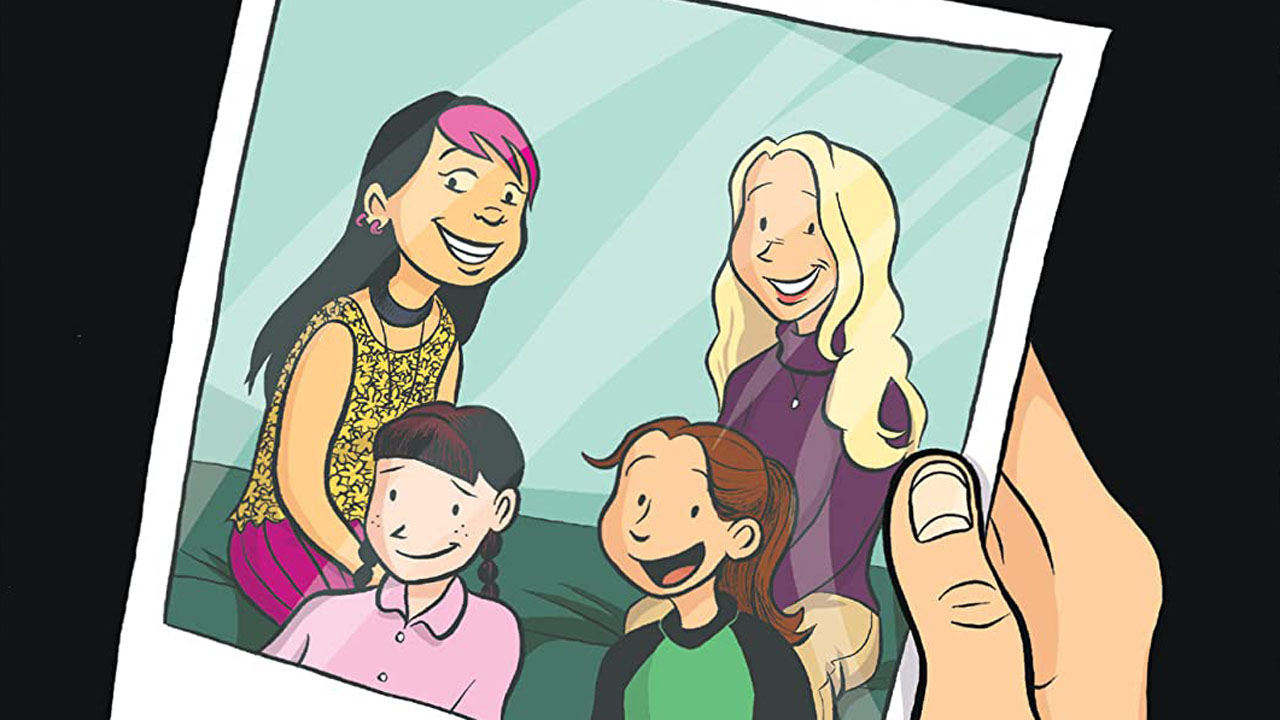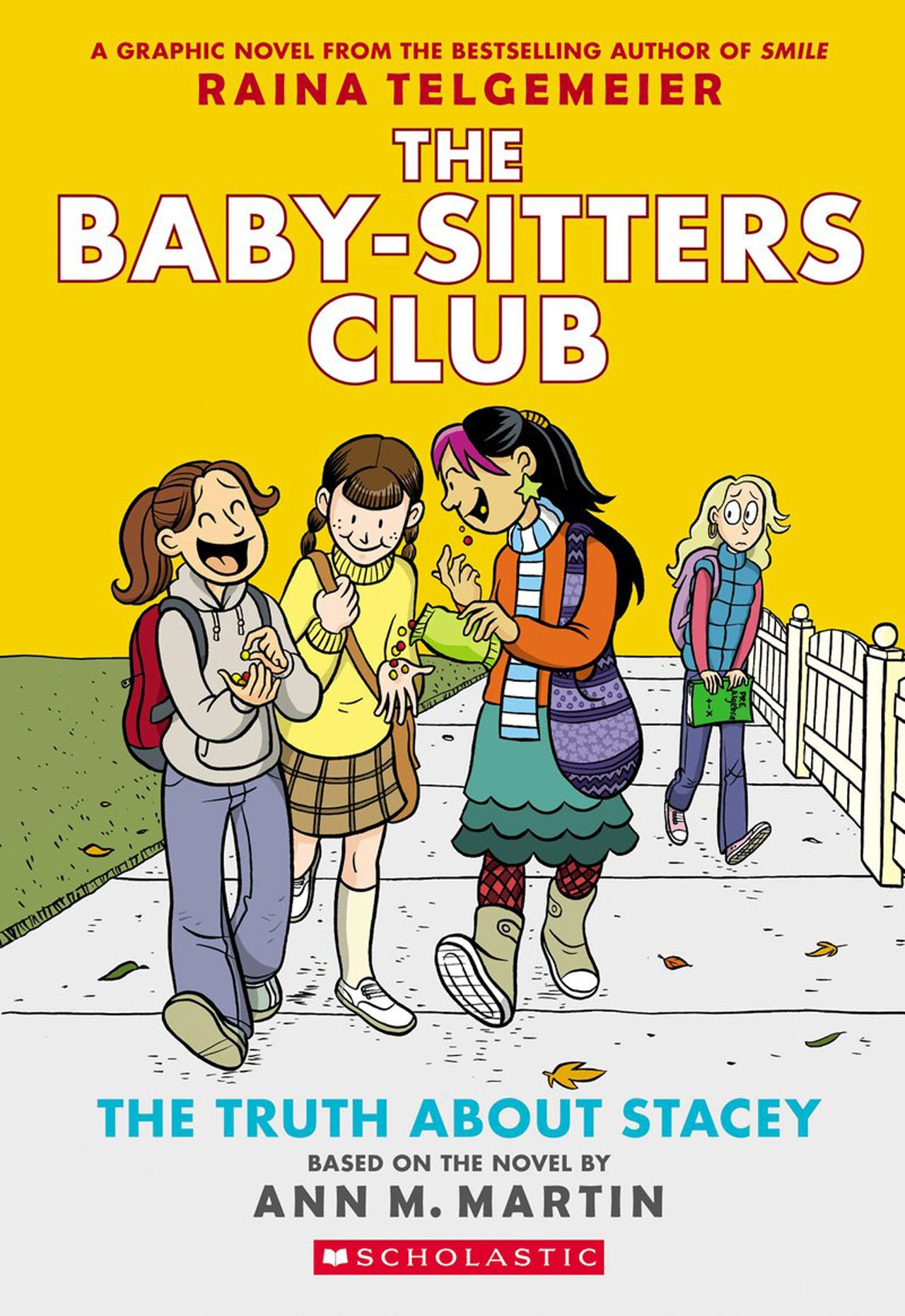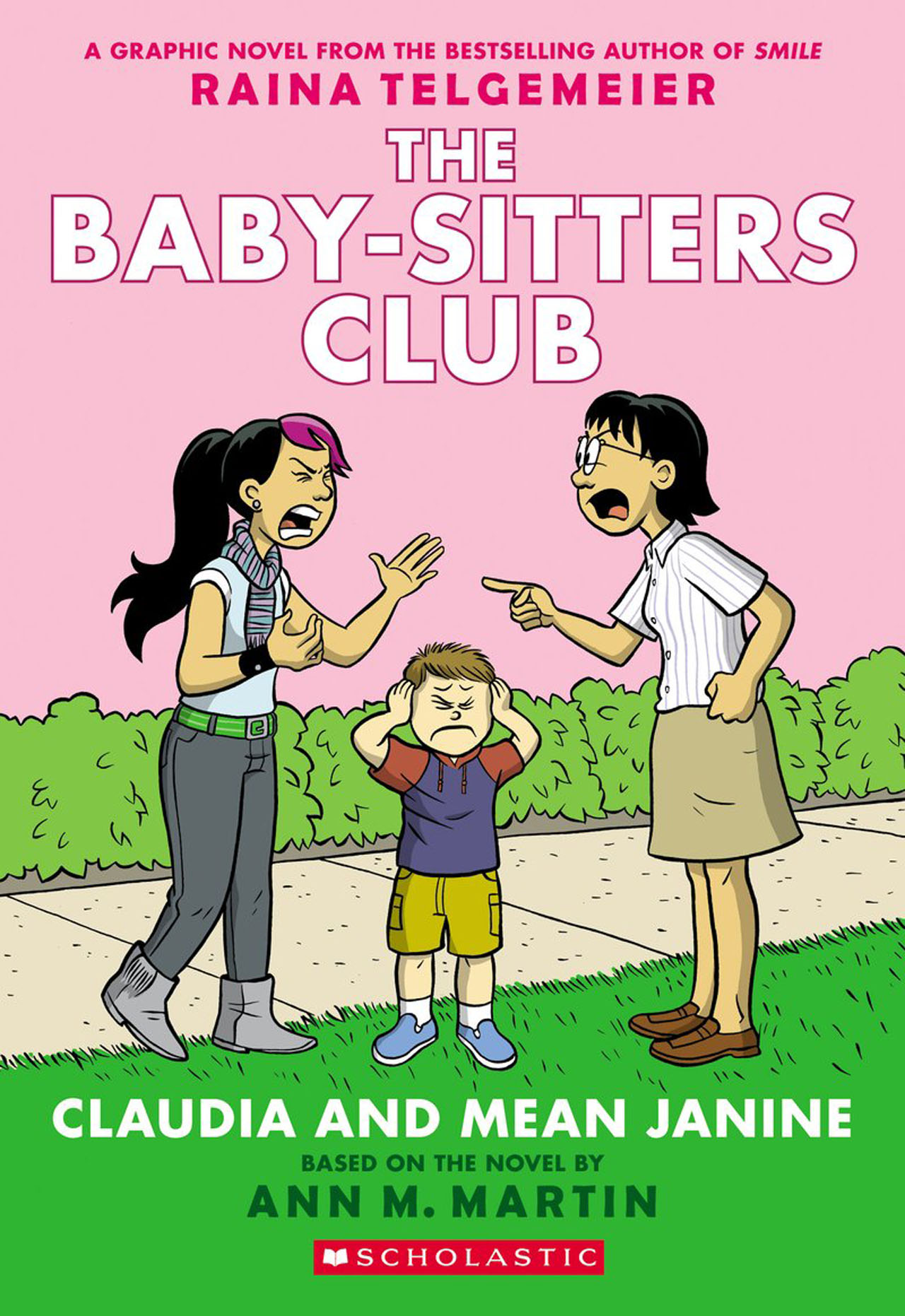Looking back at Baby-Sitters Club with Raina Telgemeier
As a new live action adaptation of Ann M. Martin's classic novels airs on Netflix

A new adaptation of Ann M. Martin's iconic Baby-Sitters Club prose novels hit Netflix recently, and it brings to mind comics' own adaptations of those novels by arguably the industry's most successful author, Raina Telgemeier.
In many ways, Telgemeier's four Baby-Sitters Club adaptations — Kristy's Great Idea, The Truth About Stacey, Mary Anne Saves the Day, and Claudia and Mean Janine — were her first blush with fame, endearing herself to BSC fans and comics readers alike.
Shortly after her final Baby-Sitters Club graphic novel was published, Telgemeier looked back on the series with Newsarama. Given a new Baby-Sitters Club adaptation now on the small screen, we re-present this interview originally published in 2009.
Newsarama: Raina, how did you come on board to adapt the Baby-Sitters Club books?

Raina Telgemeier: The editors at Scholastic invited me to pitch some ideas for their new Graphix line, and while we were talking, they also asked me about my favorite childhood books. When I mentioned that I was a big fan of the BSC as a kid, they put two and two together and asked if I would like to try doing a graphic novel adaptation.
They signed me up to do two books, and then asked for two more. Everything happened very quickly, and I went from working as an editorial assistant at a publisher to being a published cartoonist in a short period of time.
Nrama: How did you first discover the BSC books, and what impression did they make on you?
Get the best comic news, insights, opinions, analysis and more!
Telgemeier: I was in fourth grade, and we got those Scholastic Book Club order forms in class. A lot of my friends were talking about a series they were reading, The Baby-Sitters Club, so I ordered the first four (which were the only ones out at the time) in a box set.
I fell in love with them immediately and bought each new book as it was published. I was not into that many 'cool' things at that age (I got teased for watching cartoons, and none of my friends read comics), so it was something I could talk about with my friends.

Nrama: What was it like getting to meet BSC creator Ann M. Martin?
Telgemeier: I have always had great respect for her stories, and I think my own sensibilities as a writer were greatly inspired by her. I've been floored by the fact that she likes what I've done with the series. Meeting her was definitely a fangirl moment for me!
Nrama: Who's your favorite member of the Baby-Sitters Club, and why? Is she also your favorite to draw?
Telgemeier: As a kid I liked Kristy best, but that might have been because I looked the most like her. Kristy's design is based on the way I draw myself at that age. She was also the leader of the club, and an idea-person, which I definitely aspired to.
Now, I still find that drawing Kristy comes the most naturally to me, because she's very over-exaggerated and reacts to things very boldly. She's suited to being cartoony, which I appreciate.
Nrama: For that matter, which is the most difficult character to draw?
Telgemeier: Probably Stacey. Kristy's design and body language were based on myself, and Mary Anne's and Claudia's were also both based on people I know. Stacey wasn’t based on anyone specific, so 'acting' through her was kind of tricky.

Once I got into working on the second graphic novel, The Truth About Stacey, though, I feel like I got to know her better, so she's been easier to draw since then. But her design has changed way more than the other characters, if you go back and compare my drawings in the first graphic novel to the other three.
Nrama: Is it just me, or was Stacey's diabetes unusually severe? I mean, she always seemed about to go to the hospital.
Telgemeier: [Laughs] Well, don't forget, these stories were originally written in the mid '80s. Diabetes treatment has come a long way since then. But, I think the writing reflects Stacey's insecurities as a character — being 12 years old and having anything wrong with you can be really scary for a kid.
Nrama: What was the most challenging part of adapting these books?
Telgemeier: I wanted very much to preserve the heart and spirit of the original novels. But, making comic adaptations means making a lot of choices — you need to adjust the pacing, the dialogue, and in this case, a lot of the cultural references.
The original books were written in the '80s and '90s, and the graphic novels were designed to appeal to today's kids. This meant that VCRs became DVD players, we added a few cell phones, and I had to update the kids’ clothing to feel more modern.
Some of the humor got lost in the process, so I tried to compensate for it in other ways. Doing these things while still trying to keep the spirit of the originals was a challenge, but one I had a lot of fun with.

Nrama: Which story was the most fun to adapt, and why?
Telgemeier: They were all really fun. I think each book had its own moments that stood out for me: In Kristy's book, drawing Kristy running around with the dogs. In Stacey's book, drawing Stacey in New York City.
In Mary Anne's book, I liked drawing her relationship with Mimi. And in Claudia's book, I liked drawing all the kids running around, and also Kristy and Dawn's bonding scene in the barn. I think I like drawing action scenes best, but I also like drawing characters flipping out and over-acting, whether they’re laughing hysterically or getting really mad.
Nrama: So you're no longer working on the series now -- would you like to return in the future?
Telgemeier: I can definitely see myself doing more, sure. They're really fun to work on, and the response from kids has been really great.
Nrama: What stories would you have liked to adapt?
Telgemeier: There are two specifically: Kristy’s Big Day was the 6th prose book, and I skipped over it to draw book 7, because I hadn’t done a Claudia book yet. But it’s the book where Kristy's mom gets married, and the whole story focuses around the wedding. I think that would be really fun to draw.
The second book is The Ghost at Dawn's House, which is the 9th prose book. It would be great to draw a ghost story, especially one that deals with legends and old town history. Plus, Dawn is an awesome character!
Nrama: I always liked Mallory better….
What did you learn from this experience?

Telgemeier: I learned a lot of things. A lot of it has to do with confidence about my own output. I know how long it takes me to draw a page, how long it takes me to complete a project, how long I can work before my hand gives out, that sort of thing.
I think I'm a much better draftsman than I was when I began; I can now draw cars, old houses, dogs, chairs, babies, Times Square… stuff I wouldn't have challenged myself with before. I also learned that I really like working for young readers, because there’s such a limited amount of comics material out there for them.
Nrama: What would you have done differently?
Telgemeier: I probably should have spent a little bit more time designing certain set pieces. It's labor-intensive to draw 10 five-page scenes in a book where the characters are sitting around talking in a room that has lots of things on the walls, details, furniture, and artistic touches…so a lot of the characters live in simple houses without much in the way of decoration.
I wish I'd taken the time to craft the look of the world a little further, because the attention to detail pays off and is way more fun to look at later.
Zack is a comics journalist, who has written primarily for Newsarama, GamesRadar, and Indy Week. His words have also appeared in The Washington Post, AXS, VOX, The Sports Network, Gambit, and more.


